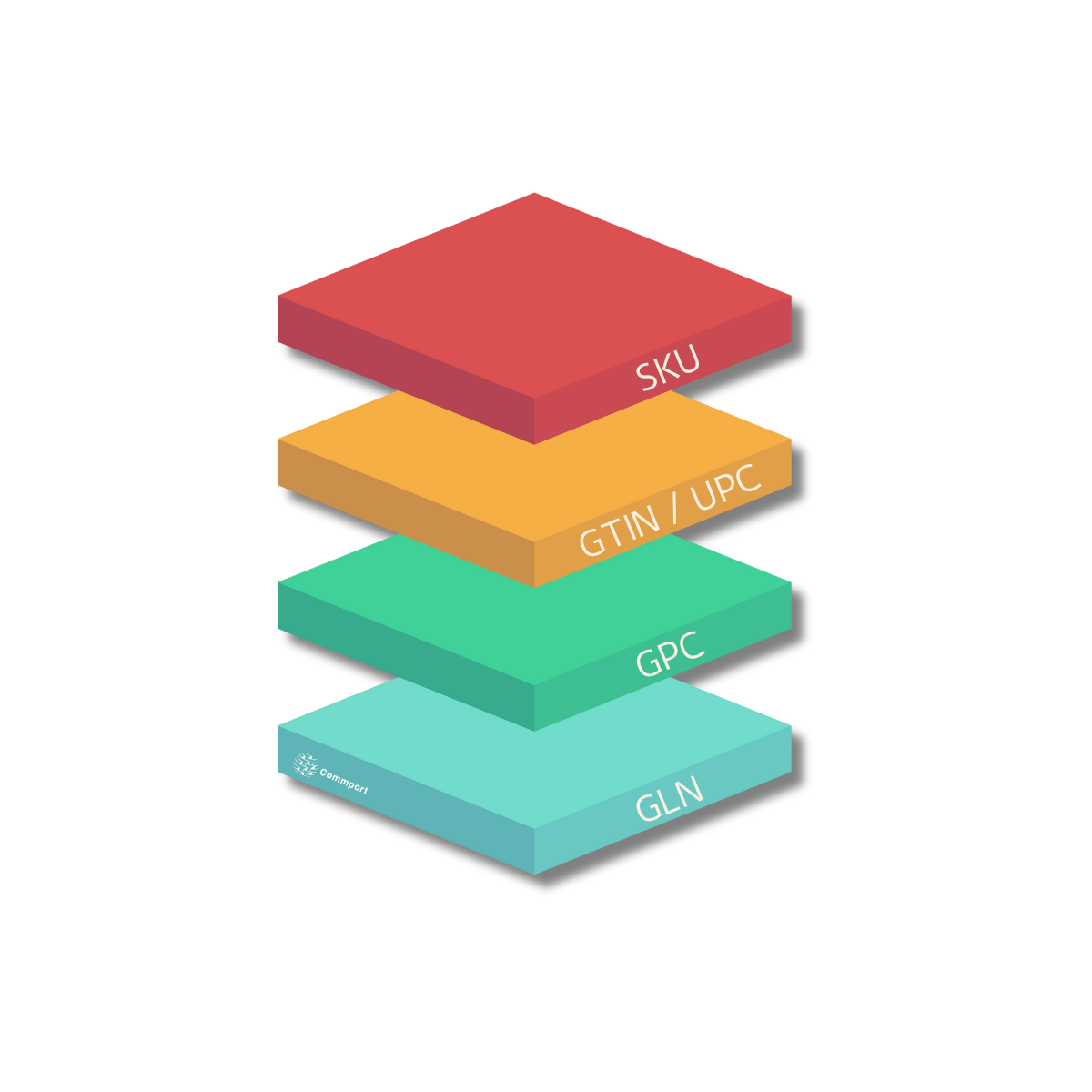Introduction
Decoding Product Identifiers
Terms like SKUs, GTINs, UPCs, GPCs, and GLNs help with product identification, classification, location, and inventory management. They are often used interchangeably, and they serve different purposes. Whether you’re a retailer, manufacturer, or supplier, understanding these codes is critical for effective inventory control, tracking, and sales. Decoding product identifiers SKU, GTIN, UPC, GPC, and GLN, is the key focus for this blog, and explaining their functions, uses, and how they can benefit your business.
Key Takeaways
Overview of Product Identifiers:
Product identifiers are essential for supply chain management, product traceability, and accurate inventory management. The blog covers five key identifiers: SKU, GTIN, UPC, GPC, and GLN.SKU (Stock Keeping Unit):
SKUs are unique to individual companies and are primarily used for internal inventory management. They help track product variations like size and color.GTIN (Global Trade Item Number):
GTINs are standardized, globally recognized identifiers used across supply chains to uniquely identify products. GTIN includes UPC, EAN, and ISBN, helping with international trade.UPC (Universal Product Code):
UPC is a subset of GTIN, widely used in North America for scanning products at retail points of sale. It consists of a 12-digit barcode for universal product identification.GPC (Global Product Classification):
GPC is a taxonomy used to group products into categories for better alignment and global data synchronization, simplifying product classification in international commerce.GLN (Global Location Number):
GLN identifies specific locations like warehouses or offices, improving the efficiency of supply chain logistics, order fulfillment, and regulatory compliance.Importance of Standardization:
Using standardized identifiers improves supply chain transparency, ensures compliance, and enhances operational efficiency by reducing data discrepancies.Choosing the Right Identifier:
Selecting the appropriate identifier depends on the industry, business needs, and geographical scope. GTIN is essential for global trade, while SKUs are more focused on internal tracking.
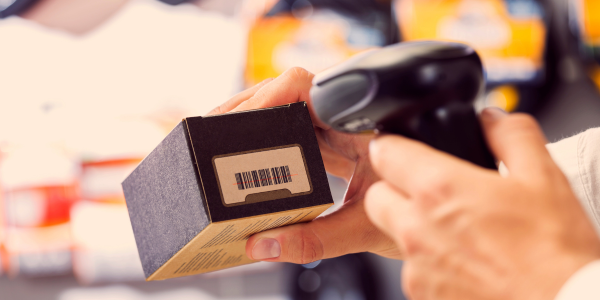
What is a SKU?
SKU stands for Stock Keeping Unit. It’s a unique alphanumeric identifier assigned to each product in a retailer’s inventory system. SKUs are primarily used for internal tracking and inventory management. Retailers create their own SKU system, so the SKU for a particular product may vary across different companies. The SKU structure varies from retailer to retailer, often reflecting details like size, color, or price.
As said, SKUs are a critical part of inventory management that helps businesses maintain accurate product records. By providing a unique code for every product variant, businesses can better track inventory levels and streamline reordering processes. This reduces the risk of overstocking or understocking and helps improve overall operational efficiency.
SKUs also help businesses of all sizes, from large retailers to small businesses, manage their product catalogs more effectively. Businesses can manage SKUs manually by calculating sales and SKU ratios or automate the process using integrated inventory management systems to improve efficiency and decision-making.
Key Characteristics of SKU
- Internal to the organization.
- Can include numbers and letters.
- Typically includes details like size, color, and type of product.
- Helps streamline inventory management, stocking, and reordering.
Benefits of SKU
- Easy internal tracking of inventory.
- Customizable to fit business needs.
- Helps with quick reordering and stock management.
What is a GTIN?
GTIN (Global Trade Item Number) is a globally recognized standard used to identify products and services. Which can range from raw materials to consumer goods and services. GTIN is a part of the GS1 system and ensures that the same product will have the same identification across the globe. Unlike SKUs, GTINs are standardized and non-modifiable by individual retailers.
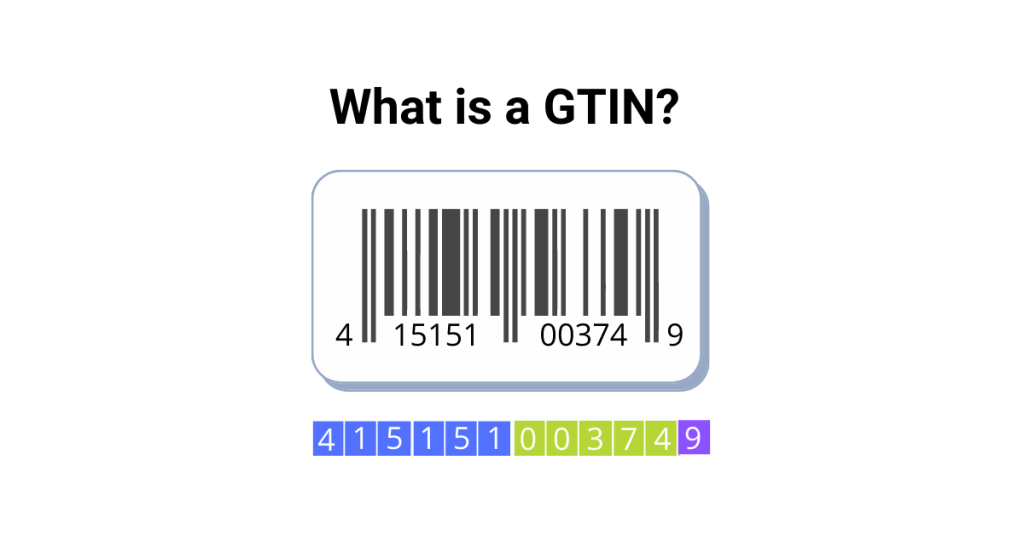
These numbers are essential in enabling seamless tracking, ordering, and invoicing throughout the supply chain ensuring that trade items are uniquely identified across various industries and regions, promoting operational efficiency, and facilitating the smooth flow of information across supply chain networks.
Different types of GTIN exist depending on where in the world the product comes from and the type of product.
The family of data structures comprising GTIN include
- GTIN-12 (UPC-A): this is a 12-digit number used primarily in North America
- GTIN-8 (EAN/UCC-8): this is an 8-digit number used predominately outside of North America
- GTIN-13 (EAN/UCC-13): this is a 13-digit number used predominately outside of North America
- GTIN-14 (EAN/UCC-14 or ITF-14): this is a 14-digit number used to identify trade items at various packaging levels
All GTINs, regardless of the number of digits, have a similar structure. The structure is a Company Prefix, Item Reference, and a Check Digit. In GTIN-14 there is an additional packaging level indicator to indicate whether the product is an item or a case.
As a seller having GTINs for your products will help you submit your product feeds to multiple platforms and avoid rejections. Increase your sales as your products start appearing on relevant search engines and ads.
As a customer you can do better product comparisons, get relevant results and product information,
Key Characteristics of GTIN
- Globally standardized.
- Can be 8, 12, 13, or 14 digits long.
- Allows universal product tracking.
- Commonly encoded in barcodes.
Benefits of GTIN
- Ensures global consistency in product identification.
- Streamlines supply chain management.
- Allows for easier product scanning and sales tracking.
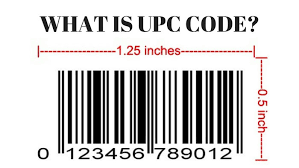
What is a UPC?
The UPC (Universal Product Code) is a subset of the GTIN and is commonly used in North America. It consists of a 12-digit code that is scanned at the point of sale. The UPC helps to track sales, inventory levels, and restocking needs but is more consumer-facing, as it’s typically what you see on product packaging.
The system was developed in the 1970s to improve the efficiency of checkouts in grocery stores. Over time, the UPC has become one of the most widely adopted product identification methods in the world. UPCs work by storing essential product data, such as the Global Trade Item Number (GTIN), which is embedded within the barcode. When scanned, the UPC retrieves the GTIN, enabling the product to be tracked, priced, and inventoried within the retail system.
UPCs consist of two parts: the barcode and the 12-digit number beneath it. The first six digits represent the GS1 Company Prefix, a unique identifier assigned by GS1, the global standards organization for product barcoding. The next five digits are the item number, which businesses assign to distinguish between different products. The final digit is a check digit, calculated to ensure the barcode is correctly scanned.
To get a UPC, businesses must register with GS1, the official issuer of UPCs worldwide. Once registered, the company is assigned a GS1 Company Prefix, which forms the foundation for generating unique UPCs. Businesses can then create individual item numbers for each of their products.
Having a UPC allows businesses to sell products across various retail and eCommerce platforms. Major retailers like Walmart, Amazon, and Target require UPCs for listing products, making them a necessity for any business looking to expand its reach.
Key Characteristics of UPC
- A 12-digit numeric code.
- Mainly used in retail environments.
- Part of the GTIN family.
- Easy product scanning and identification.
Key Benefits of Using UPCs
- Global Standardization: UPCs are recognized internationally, making them ideal for businesses looking to sell products across borders.
- Streamlined Checkout: In retail environments, UPCs simplify the checkout process, allowing for faster transactions and better customer experiences.
- Improved Inventory Management: By incorporating UPCs into inventory systems, businesses can automate stock tracking, reorder products efficiently, and reduce stockouts.
- Enhanced Product Traceability: With each product tied to a unique UPC, businesses can trace items throughout the supply chain, improving quality control and recall management.
What is a GPC?
GPC (Global Product Classification) is a system developed by GS1 to categorize and classify products in a standardized way across various industries. The goal of GPC is to create a common language that allows businesses, governments, and consumers to easily identify and categorize products globally.
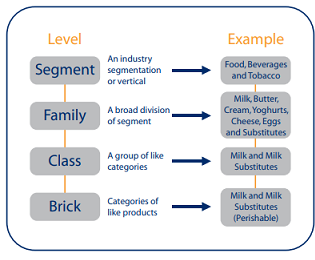
Key Characteristics of GPC
Hierarchical Structure: GPC uses a hierarchical model to classify products into broader categories, then narrows down to specific types. The hierarchy typically includes four levels: Segment, Family, Class, and Brick (the most granular level).
Global Standardization: As a globally recognized standard, GPC allows businesses to categorize products consistently regardless of the country or market.
Efficient Data Exchange: GPC enables efficient and accurate product data exchange between trading partners, which is crucial for processes such as global data synchronization (GDSN), product marketing, and supply chain management.
Cross-Industry Application: The GPC system is used across various sectors such as retail, healthcare, and logistics, helping businesses standardize their product catalogs and ensure interoperability between systems.
Benefits of GPC
Standardization: Ensures products are classified consistently worldwide, reducing errors and miscommunication.
Improved Searchability: Helps businesses and consumers find products more easily across catalogs or marketplaces.
Efficiency: Simplifies product categorization for manufacturers, retailers, and trading partners, promoting smoother data exchange.
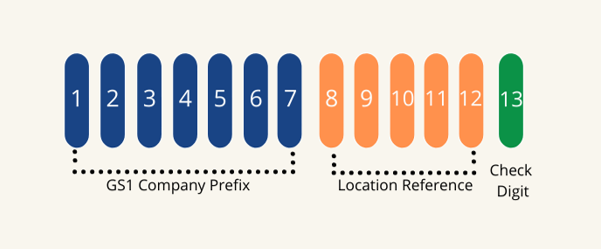
What is a GLN?
A GLN is a unique 13-digit identifier used to specify a particular location or entity within an organization. It ensures that locations such as warehouses, stores, offices, or even functional entities (like accounting departments) are uniquely recognized across global supply chains and business transactions. This standard helps businesses manage their operations, suppliers, and customers more effectively by using a globally consistent identification system
Key Identifiable Elements by GLN
- Physical Locations: e.g., warehouses, distribution centers, offices.
- Legal Entities: e.g., companies, subsidiaries.
- Functional Entities: e.g., procurement departments, customer service units.
Structure of a GLN
The GLN follows a structured 13-digit numeric format that includes:
- GS1 Company Prefix: The first part of the GLN is the GS1 Company Prefix, a unique number assigned to the organization by GS1.
- Location Reference: The next section of the number identifies the specific location or entity within the company.
- Check Digit: The last digit is a check digit used to verify the integrity of the number through a mathematical formula.
How GLN Works
GLNs work by providing a unique reference point for each entity or location involved in a business transaction. This eliminates the need for manual intervention when identifying locations, reducing errors, and ensuring that the right goods and services are sent to the correct place. When integrated into electronic data interchange (EDI) systems, the GLN facilitates seamless communication across trading partners and automates supply chain processes.
For example:
- Order Processing: GLNs are used in procurement systems to ensure that purchase orders are directed to the correct department or warehouse.
- Shipping and Logistics: In logistics, GLNs help ensure that products are delivered to the appropriate distribution center or store.
- Healthcare: GLNs are widely used in the healthcare sector to track the movement of medical supplies, ensuring accurate delivery to hospitals and clinics.
How to Obtain a GLN
To obtain a GLN, a company must first register with GS1 to receive a GS1 Company Prefix. This prefix is used to create unique GLNs for each location or entity. The process involves the following steps:
- Register with GS1: Your company will need to apply for a GS1 Company Prefix, which will be used to generate GLNs. Get GLNs
- Assign Location Reference: You assign a unique location reference number to each physical, legal, or functional entity you wish to identify.
- Use and Integrate: Once created, the GLNs can be used in business documents, databases, and electronic transactions.
Benefits of Using GLN
One of the key applications of GLNs is the Global Data Synchronization Network (GDSN), which is used by businesses to exchange standardized product information across global markets. GLNs ensure that product data, shipping details, and other business information are accurately synchronized between trading partners, improving supply chain efficiency and reducing errors in product identification.
The adoption of GLNs brings several key benefits to businesses and organizations:
- Increased Accuracy
GLNs provide a unique and standardized identification system, reducing the risk of miscommunication or errors when dealing with multiple locations or departments.
- Efficient Data Exchange
In EDI and other automated data-sharing systems, GLNs streamline communication between trading partners by ensuring that the right information is transmitted to the correct entity.
- Improved Traceability
GLNs enable better tracking of goods, services, and financial transactions, improving the overall transparency and traceability of business processes. This is especially critical in industries like healthcare and logistics, where accuracy and accountability are paramount.
- Simplified Supply Chain Management
By using GLNs, companies can easily manage multiple locations, reducing administrative complexity and ensuring smooth supply chain operations.
- Global Standardization
As part of the GS1 system, GLNs are recognized worldwide, making it easier for businesses to operate across borders without needing to worry about inconsistent location identification methods.
Here’s a table comparing SKU, GTIN, UPC, GPC, and GLN based on their key characteristics
SKU | GTIN | UPC | GPC | GLN | ||
|---|---|---|---|---|---|---|
| Internal inventory management and product tracking within a company |
| Identifies trade items (retail products) at point of sale | Classifies products into standard categories for data exchange | Identifies specific locations (physical, legal, or functional entities) | ||
| Varies (alphanumeric, typically 8-12 characters) | 8, 12, 13, or 14 digits | 12 digits | N/A (hierarchical, includes segments like “Segment, Family, Class, Brick”) | 13 digitss | ||
| Internal inventory, warehouses, retail management systems |
|
| Supply chain, retail, healthcare, and regulatory environments | Supply chain, logistics, healthcare, retail, and government | ||
| Retailers, manufacturers, warehouses | Manufacturers, distributors, retailers | Retailers, manufacturers, distributors | Manufacturers, retailers, data managers | Retailers, logistics companies, hospitals, warehouses | ||
| Alphanumeric, no strict format | Numeric format with a check digit | Numeric format (12-digit) with a check digit | Hierarchical product categories, no specific format | Numeric format with a check digit | ||
| The individual company | GS1 or designated company | GS1 (as part of GTIN system) | GS1 assigns classification categories | GS1 assigns company prefix, company assigns GLNs to specific locations | ||
| Inventory and stock tracking within a company | Tracking and identifying trade items globally | Product identification in retail checkout systems | Product classification for data synchronization and exchange | Identifying physical locations, legal entities, and functional entities | ||
| No, it varies by company | Yes, GS1 standard | Yes, as part of GTIN | Yes, GS1 standard | Yes, GS1 standard | ||
| ABC12345 (varies) | 0123456789123 | 012345678905 | N/A (no numeric identifier, e.g., “Dairy Products > Milk > Whole Milk”) | 1234567890123 |
Conclusion
While SKU, GTIN, UPC, GPC, and GLN serve similar purposes in product identification and tracking, they each have distinct roles. SKUs offer flexibility for internal tracking, while GTINs and UPCs provide global consistency, GPC aids in trade classification and GLN is a globally standardized identifier for physical and legal locations, widely used across industries. Understanding how these codes work can significantly improve efficiency in inventory management, supply chain processes, and overall business operations.
Download: GDSN Buyers Guide
Empower your business with global data synchronization; download our GDSN Buyer's Guide today and take the first step towards streamlined, accurate, and compliant product data management.
Explore Commport B2B Network Solutions
Frequently Asked Questions
No, each product variant (size, color, etc.) should have its own unique SKU.
A UPC is a type of GTIN used mainly in North America, with 12 digits.
No, GPC is a product classification system, while GTIN is for product identification.
GTINs are assigned by manufacturers and suppliers using the GS1 system.
No, SKUs are unique to each retailer or company.
No, GTINs are standardized and need to be obtained through GS1.
UPCs ensure consistency in product scanning and sales tracking at the point of sale.
While not mandatory, GPC is widely used to streamline global trade operations.
A Global Location Number (GLN) is used to uniquely identify physical locations, legal entities, or functional entities in the supply chain.
How does a business obtain a GLN?

